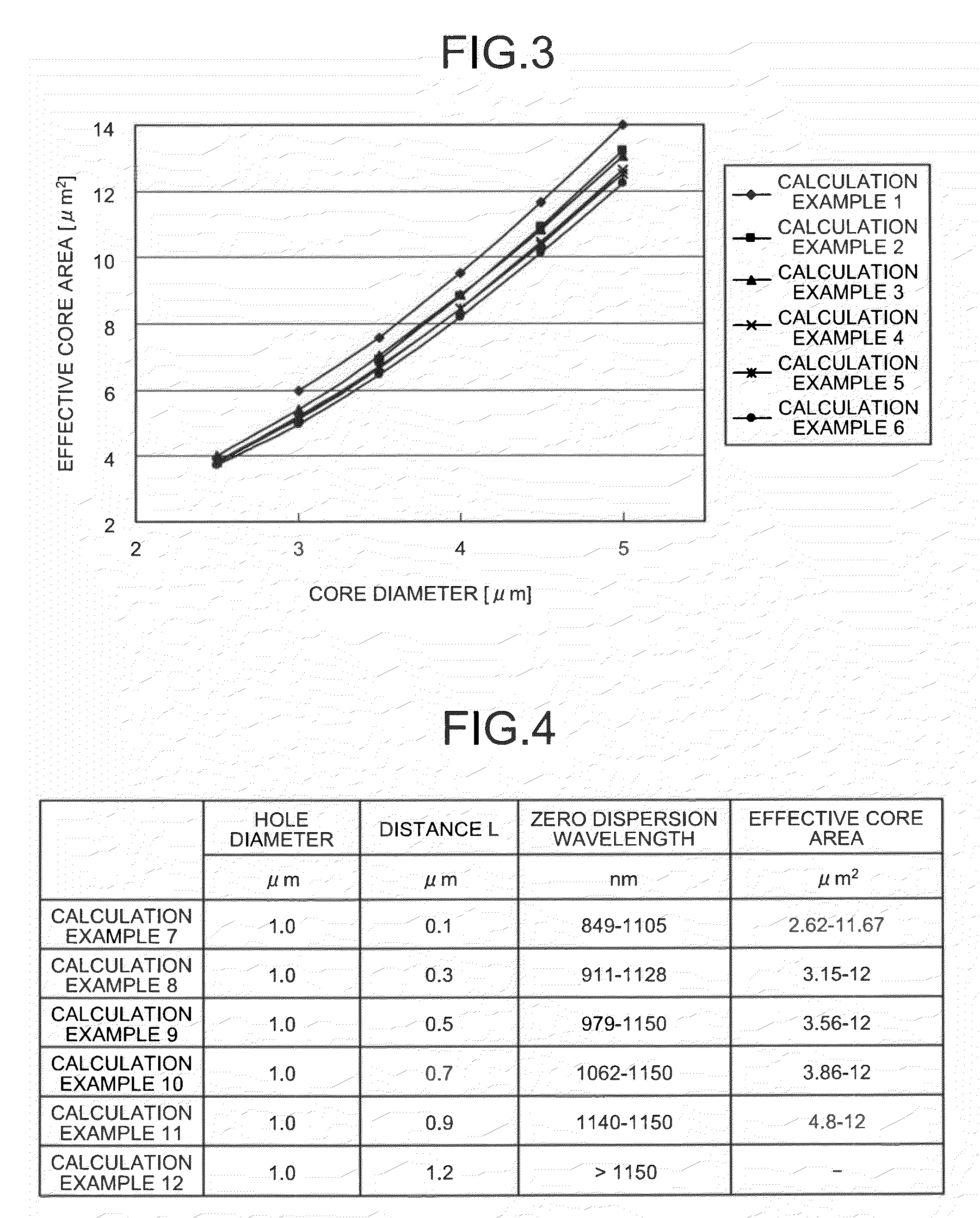Optical fiber and optical device
a technology of optical fiber and optical device, which is applied in the direction of optical waveguide light guide, optical light guide, instrument, etc., can solve the problems of increasing cost, difficult to set the zero dispersion wavelength to a wavelength shorter than 1200 nanometers, and difficult to achieve the effect of achieving the effect of achieving the effect of reducing the cos
- Summary
- Abstract
- Description
- Claims
- Application Information
AI Technical Summary
Benefits of technology
Problems solved by technology
Method used
Image
Examples
first embodiment
[0045]FIG. 1 is a schematic cross section of an optical fiber 10 according to the present invention. As shown in FIG. 1, the optical fiber 10 includes a core region 11 and a cladding region 12 formed on the outer circumference of the core region 11.
[0046]The core region 11 is made of germanium-doped silica glass. The cladding region 12 is made of pure silica glass that substantially does not contain a dopant for adjusting the refractive index and has a refractive index lower than a refractive index of the core region 11. A relative refractive index difference Δ1 of the core region 11 with respect to the cladding region 12 is, for example, 2.1%. The relative refractive index difference Δ1 is defined by Equation (1), where ncore is the maximum refractive index of the core region 11 and nclad is the refractive index of the cladding region 12.
Δ1={(ncore−nclad) / ncore}×100 (%) (1)
[0047]The diameter of the core region 11 (core diameter) is, for example, 3.27 micrometers, and the diameter ...
third embodiment
[0096]As a modification example of the third embodiment, in the optical fiber 30, the core diameter of the core region 31 can be set to 3.8 micrometers, the relative refractive index difference Δ1 can be set to 1.3%, the hole diameter of each of the holes 33 can be set to 3.0 micrometers, and the distance L between the core region 31 and each of the holes 33 can be set to 0.65 micrometer. A calculation of the optical characteristics of the optical fiber according to the modification example by a simulation shows desirable characteristics that the zero dispersion wavelength is 1135 nanometers, the cutoff wavelength is 1000 nanometers, the effective core area is 10.6 μm2 at the wavelength of 1064 nanometers and 12.9 μm2 at the wavelength of 1550 nanometers.
[0097]As an embodiment example 3, the optical fiber according to the modification example is fabricated. The fabrication method for the optical fiber according to the embodiment example 3 is same as those for the optical fibers acco...
fourth embodiment
[0099]FIG. 25 is a schematic cross section of the optical fiber 40 and its refractive index profile. As shown in FIG. 25, the optical fiber 40 includes a core region 41 and a cladding region 42 formed on the outer circumference of the core region 41. The cladding region 42 has six holes 43 arranged around the core region 41. The holes 43 are arranged to make a six-fold rotational symmetry centering around the core region 41. In addition, in the optical fiber 40, the cladding region 42 further includes a low refractive index layer 42a formed around the core region 41.
[0100]In FIG. 25, a refractive index profile P1 shows a refractive index profile on a cross section that passes through the center axis of the core region 41 and that does not include the holes 43. In the figure, α11 shows the relative refractive index difference of the core region 41, and Δ21 shows the relative refractive index difference of the low refractive index layer 42a with respect to the cladding region 42 excl...
PUM
 Login to View More
Login to View More Abstract
Description
Claims
Application Information
 Login to View More
Login to View More - R&D
- Intellectual Property
- Life Sciences
- Materials
- Tech Scout
- Unparalleled Data Quality
- Higher Quality Content
- 60% Fewer Hallucinations
Browse by: Latest US Patents, China's latest patents, Technical Efficacy Thesaurus, Application Domain, Technology Topic, Popular Technical Reports.
© 2025 PatSnap. All rights reserved.Legal|Privacy policy|Modern Slavery Act Transparency Statement|Sitemap|About US| Contact US: help@patsnap.com



